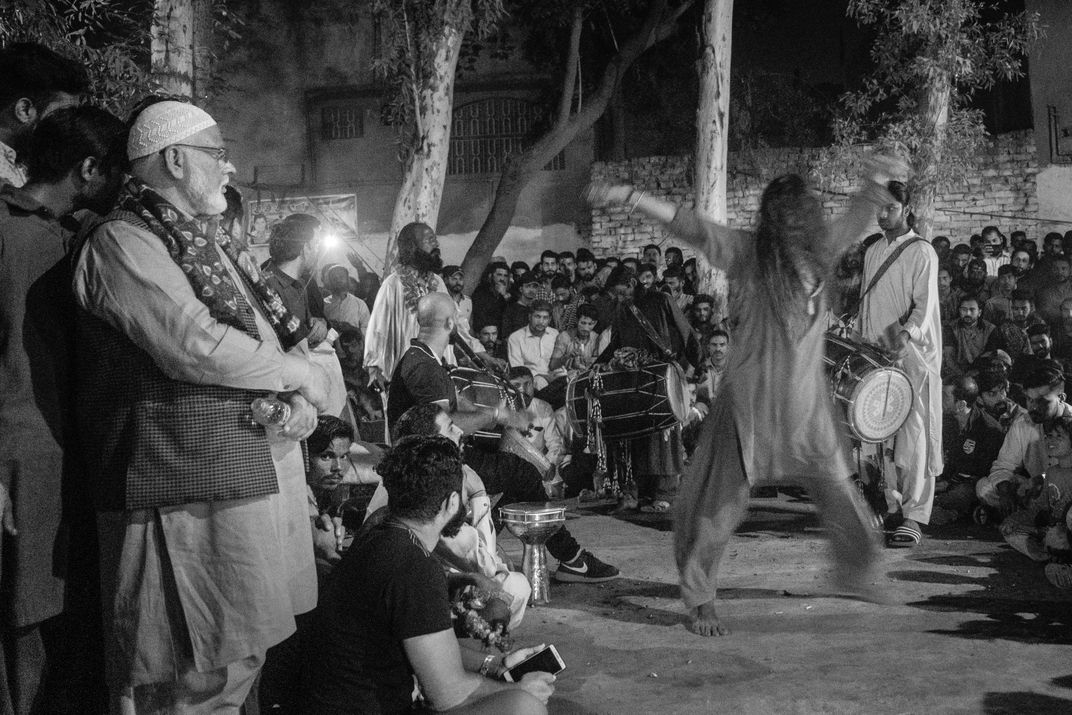A dervish performing dhamaal to the dhol beat at Madhu Laal Hussain shrine in Lahore. Shah Hussain’s life took a turn when he came across a Brahmin Hindu boy, Madhu Laal, riding a horse from Shahdara, across the river Ravi. The locals started to refer them both as one entity. The bond between the two went so deep that Shah Hussain put his name after his beloved's, becoming Madhu Laal Hussain. Beyond the personal bonding of the two, Shah Hussain's union with Madhu was a metaphor for the people's unity in South Asia — negating all religious and social institutions through their mode of life. The urs and the mela (festival) were two separate events, one carried out at the shrine and the other in the Shalimar Gardens, until they were both combined into one, Mela Chiraghan (Festival of Lamps), by Ranjit Singh. The spring mela, revered by the Hindus, and the urs, celebrated by the Muslims, signified union and harmony among the two faiths when combined into one celebration — remembering the bond of Shah Hussain and Madhu Laal. The shrine is marked by a massive "fire well" which is lit throughout the urs by the devotees using wax, oil, wood and cotton. Visitors mark their presence by adding to the already lit fire or by igniting cotton lamps decorated all over the shrine complex. The festival, much like the fire, has been a continuous affair for centuries. During Ranjit Singh’s rule in 18th century, the emperor would lead a procession from his palace to the shrine barefoot, accompanied by thousands of Sikhs, Muslims, and Hindus. Mela Chiraghan is still regarded as the biggest festival of Punjab, both east and west, and has been a symbol of love, devotion, harmony and defiance of social customs.
| Date Taken: | 10.2019 |
| Date Uploaded: | 11.2019 |
| Photo Location: | Pakistan |
| Camera: | X-T30 |
| Copyright: | © Amrinder Saini |

